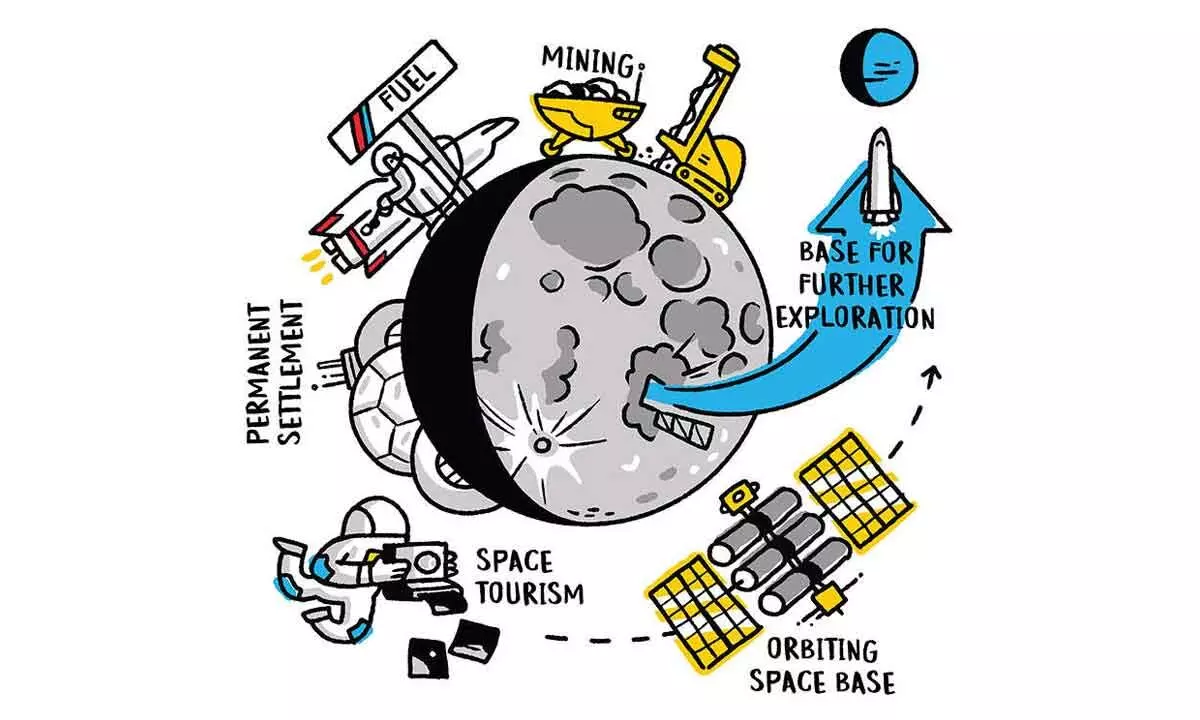Live
- CITU demands rollback of strategic sale of VSP
- 7-Year-old girl sexually assaulted in Tirupati
- PM Modi highlights govt's efforts to make Odisha prosperous and one of the fastest-growing states
- Hezbollah fires 200 rockets at northern, central Israel, injuring eight
- Allu Arjun's Family Appearance on Unstoppable with NBK Breaks Viewership Records
- Unity of hearts & minds essential for peace & progress, says J&K Lt Governor
- IPL 2025 Auction: I deserve Rs 18 cr price, says Chahal on being acquired by Punjab Kings
- EAM Jaishankar inaugurates new premises of Indian embassy in Rome
- Sailing vessel INSV Tarini embarks on second leg of expedition to New Zealand
- Over 15,000 people affected by rain-related disasters in Sri Lanka
Just In

Occasionally, in life there are those moments of unutterable fulfillment which cannot be completely explained by those symbols called words. Their...
Occasionally, in life there are those moments of unutterable fulfillment which cannot be completely explained by those symbols called words. Their meanings can only be articulated by the inaudible language of the heart as Martin Luther King Jr said. “India on the Moon” moment is one such. The euphoria born of surmounting challenges compels one to celebrate the very act of conquering.
Endless possibilities confront us. A Prakash Raj, who caricatured a genteel K Sivan, former Chairman of ISRO, as a Malayalee chaiwallah, in his tweet the other day might as well post yet another ‘chaiwallah’ alongside Sivan – Somnath – in his new tweet to ask ‘so what?’ Well, the Moon could now become an ideal launchpad for missions to Mars and other worlds. India will certainly have its say in these experiments now.
ISRO has been freed from the shackles of foreign pressure and dirty anti-national politics (remember Nambi?) and none could stop it from exploring the cosmos with a new-found vigour and enthusiasm. Apollo 17 astronauts Eugene Cernan and Harrison Schmitt hold the record for the longest time on the Moon – 75 hours. Will we ever live on the Moon? When Apollo 17 returned from the Moon in 1972, few people would have imagined that we would still be waiting for another human to set foot on our cosmic companion nearly 50 years later. In fact, most people at the time thought that by now we would have a human settlement on the Moon. But that dream has stalled.
Why is it one thing getting to the Moon… but it’s quite another living there. Sending humans to the Moon comes with huge costs, risks and technological challenges. This is why space agencies have focused on cheaper and safer robotic explorers since the Apollo missions. These orbiters and rovers have uncovered a great deal about the relationship between the Moon and Earth. But if we want to get to the heart of the Moon’s mysteries and if we want to reach out into the rest of the Solar System and wider Universe, we need a Moon base. Unfortunately, setting up camp on the Moon is much more difficult than sending astronauts there for a few days. Unlike the Apollo astronauts, lunar settlers would need to survive out of the extra-terrestrial resources to hand. Unfortunately, these resources are pretty barren. But with ingenuity, they can be transformed into almost everything a human needs.
Making breathable air could be easy as the lunar soil is 42% oxygen. Using heat and electricity, this oxygen can be harvested by robots. Already, NASA has developed and field-tested prototype robots on Earth capable of fulfilling this role. Water is 2/3 hydrogen and 1/3 oxygen.
The harvested oxygen offers plenty of the first ingredient. Sourcing the second ingredient is more difficult. At present, the only option would be to send regular supply ships filled with liquid hydrogen, and then mix them together.
A better solution would be if we could find water on the Moon. It has ice now. Extracting the hydrogen and oxygen for rocket fuel and for growing food would also be possible. Experiments here with soil that mimics lunar dirt have shown promise. Adding human manure to the soil binds the toxic metals and compounds, adds nutrients and helps retain water. The only elements Moon settlers would need to bring from Earth are seeds and earthworms for a sustainable lunar agricultural ecosystem. Fiction? Not really. The coming generations and particularly, the ISRO breed would laugh at this suggestion. The path to new frontiers goes through ISRO Sir!

© 2024 Hyderabad Media House Limited/The Hans India. All rights reserved. Powered by hocalwire.com







